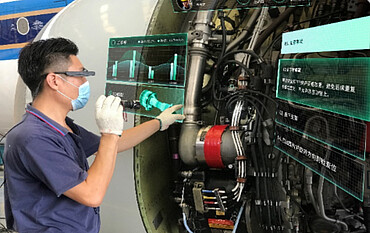Abstract
The airline maintenance industry is currently facing intense and uncertain challenges, such as information lags and isolated data islands caused by the use of manual job cards. These challenges can create inefficiencies and delays, and may hinder the ability of maintenance teams to make informed decisions in a timely manner. China Southern Airlines has been a leader in digitalisation within the industry, and this case focuses on the digital transformation of their maintenance system. Students will learn how digital transformation occurs in enterprises, which is a complex project requiring systematic thinking, especially in an industry where safety is a priority. Wang Jinshen, leader of the company's technical arm, proposed TAOIX (Touchless, Adaptive, Optimised, Immersive, eXtensible) as the future requirements for the system, representing the fundamental path of enterprise digital transformation. The case explores how business requirements must be at the centre of transformation progress, and discusses data assets, business models, and long-term effective collaboration for innovation. The case concludes by examining the need to create a new organisational model for cooperative innovation between state-owned and private enterprises.
Citation Note
Based on field research; 18 pages Follow the 'handle' link to access the Case Study on RePub. For EUR staff members: the Teaching Note is available on request, you can contact us at rsm.nl/cdc/contact/ For external users: follow the link to purchase the Case Study and the Teaching Note.
Objective
1. Understand the concepts of augmented reality (AR), virtual reality (VR), and metaverses; 2. Figure out alternative paths and methods for civil aviation enterprises during the digital transformation of configuration management; 3. Provide solutions to enterprises faced with challenges during the implementation of AR; 4. Explain how AR+AI will continue to empower the aviation industry in the next three to five years.
